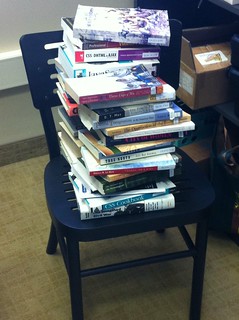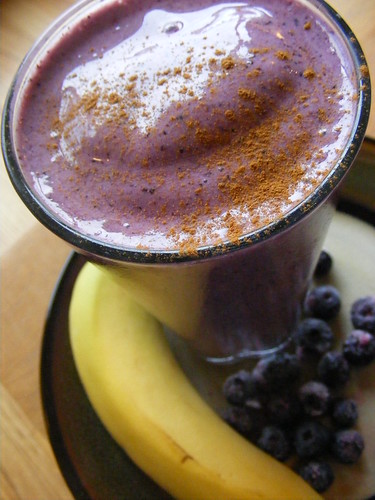Inspired by this Profhacker post, here are my Top 10 clothing-packing tips. I believe in keeping things simple, and developed the strategies below so I can minimize the worries that I have before an upcoming trip, and so I can prepare at a moment’s notice.* For me, that means carrying on one small roll-aboard suitcase with my clothing/toiletries and a shoulder bag with my travel documents and electronics. For long trips with many transfers, I’ll carry it all in one backpack.
1) Travel light. If in doubt, don’t bring it. (I can’t emphasize this enough–one can definitely travel in Europe for two weeks and wear the same clothes everyday)
2) Related to #1, Carry on. If you carry on your bags, you’ll be forced to travel light and can make smoother transfers, and can get where you’re going without needing an assistant or a trolley to get you there. But egads, don’t be that carry-on person with the too-large expandable-zipper suitcase. If you can’t lift it over your head and into the bin easily, it’s too much.
3) Make a universal packing list and then customize it for each trip. I keep my universal packing list in a googledoc (so I can access it from work or phone or home), and then create a new list for a specific trip using the universal list as a template. Or if my travel is so last-minute that I don’t have time for a custom list, I just use the universal one.
4) Include an outfit list with your packing list. I print out this list and put it in the inside mesh-zipper pocket of my roll-aboard, where it’s visible every time I open my bag. I didn’t use to do that, but I found that if I make a list of each outfit that I’ll need for my trip, I’m less likely to forget something like the shoes or the tights that I need to make an ensemble work. And I’m also less likely to be packing items that I won’t actually wear and will add unnecessary weight (see #1). Also, I rarely bring more than three outfits on a trip–even one that’ll last two weeks. By outfit list, I mean something like this:
Conference day #2: black slacks; brown sweater with black tank layered underneath; black trouser socks; black flats; gold chain necklace and gold hoop earrings; grey raincoat and blue flowered scarf
As a sidenote: I’ve you’ve seen me at many conferences you’ve probably realized that I wear the same outfits to most of them. I like having a “uniform” and making things easy on myself that way–so I can focus on the content of the event and not on fretting about what I’m wearing to and from. While I also get a lot of pleasure from looking nice when I travel, for me keeping things simple offers that, rather than worrying too much about the details of my clothing choices (and knowing that and being stress-free is more important to me than accessorizing).
5) Wear black and grey items with colored accessories. It’s true that I probably wear too much black, but it’s so seductive when one is packing light–it not only doesn’t show roadgrime, but it can go from casual to classy just by changing a necklace or a scarf. For example, one of my must-packs is a black knit dress like this one. It can go from beach to opera house** depending on whether I wear tights or a belt or boots or chandelier earrings. I can layer a long-sleeve tee underneath it for winter, too. My black travel staples include the dress mentioned above, a tanktop, wash & wear dress-slacks, and a long-sleeve tshirt.
6) I try to make sure that every item I bring can be both dressed-up and dressed-down, particularly my bulky outerwear because I don’t want to bring along more than one coat or jacket. For example, for winter I’ve got a hip-length grey wool peacoat that looks good with jeans and a t-shirt, as well as over a cocktail dress. For fall weather I bring along an artsy-looking black velvet blazer with a bright-colored lining that can be worn with tailored clothes, casual, or dressy.
7) I wear one pair of shoes and pack another. Usually I wear something more casual (i.e. Cons) and pack a pair of black flats. If it’s winter and I need to bring boots along, then I sacrifice a lot of suitcase real-estate to do so (it’s rarely worth it to me).
8) For me, going through TSA checkpoints can be a bit of a hassle (i.e. I always get the patdown), so I tend to wear as little clothing as possible for those encounters. Usually that means a knit dress over leggings or a tank top with slacks or jeans. That way, there’s no mystery about what I might be “hiding” under my clothes. Most importantly, I carry the same bags every time I travel so I’m familiar with exactly what they look like and how they feel in my arms. So I can easily tell if I’ve forgotten anything, or left an item behind on the conveyor belt–even when my mind is preoccupied about whether I’ve got time for my flight transfers. Also, I tend to wear socks when I travel because I don’t like the idea of walking barefoot through the TSA area (oh, and I also like going sock-footed while at my seat on the plane). But maybe I’m just weird that way.
9) Have dual-purpose clothing. I pack pajama pants that I can also wear to the gym, and a spandex tank-top that can be paired with a skirt for a night out, layered under a sweater for warmth, worn for a workout in the hotel fitness center, or also worn for a dip in the ocean/hotel swimming pool/WaldenPond. I will confess that I’ve done all of those with the same tank-top in the same trip. It works, and one can always rinse it out in the sink and let it dry overnight if one doesn’t want eau-du-pond lingering for the rest of your travel.
10) This is only tangentially clothing-related, but is so important to smooth travel, that it warrants being the capstone on this list. Keep your travel documents in one place, and make that the same place in the same bag every time you travel. I carry a file folder in my shoulder bag with my travel documents, including itineraries, reservation conformations, train passes, addresses/phone list, and conference schedules. If I take a document out of that folder, I put it right back in as soon as I’m done. I also use that same folder to collect receipts for travel reimbursement, or brochures from places that I visited. If I’m having to jot down some important contact information for my trip on the fly (i.e. my hotel reservation was changed to a different place and I’m copying down an address for a cab driver), I’ll write it directly on the outside of the folder so it’s easy to find. Then when I get home from the trip I put that folder into my file drawer for future reference.
And a bonus:
11) Streamline electronics. In an ideal world I would bring my Canon 50d and my MacBook and my phone and e-reader along on every trip. Instead, for freedom and mobility I allow myself one large (read: heavy) electronics item and I forgo the others. For example, if I’m headed to Europe for pleasure, I’ll bring my nice camera and leave the laptop. However, if I’m traveling domestically for work, I’ll probably leave both home unless I’m giving a conference talk and I need to present from my laptop (although Prezi for iPad might mean I no longer do that, soon enough). I tend to bring my iPad (non-3G because I’m cheap like that) and iPhone on every trip now. On the iPad I load guidebooks and layover-reading materials. Given its longer battery life, it’s well-worth the weight of that in addition to my iPhone, which works better for mapping and communicating with fellow travelers or family members back home.
*one day last summer I spent time in three different countries with social obligations in each one that required changes of clothing. Pulling that off has convinced me that traveling light and simple is the way to go–so I can enjoy the journey more and fret less.
**or to an on-the-spot cameo appearance in the LDS Conference Center



